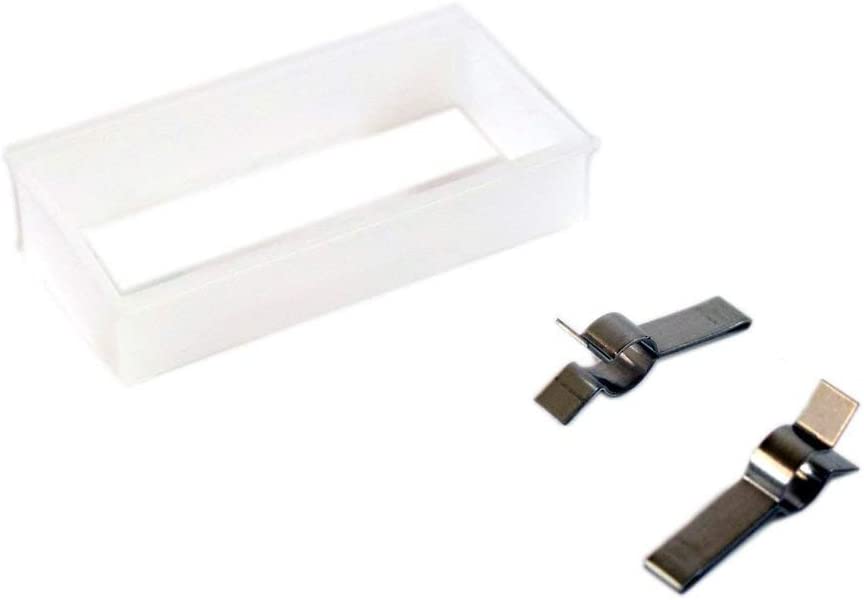As an Amazon affiliate, we earn a commision from qualifying purchases.
This could be you: You have noted that your Samsung refrigerator has icing issues and besides, the fan is making an obnoxious noise during normal operation.
Put another way, your Samsung refrigerator is solidly frozen, causing the area near the fan to freeze and accumulate ice which affects the fan- noise could be occurring due to the fan hitting frost buildup.
This could be driving you nuts but it doesn’t have to…
In fact, the best news is that there are several tricks you can try to get rid of the ice buildup and stop the fan noise.
Below are the fixes that are worth a shot when it comes to the issue of Samsung refrigerator fan making loud noise due to excessive ice buildup.
Also, we will tell you how to prevent the fault in the future even for Samsung refrigerator brand models that come with the “twin cool plus” mechanism (on the fridge side).
Samsung refrigerator fan noise ice buildup fix – your options
To resolve the issue, the idea is simple: perform a manual defrost (the “Refrigerator Defrost” (rD) setting won’t always help here).
For the most part, the fan noise is likely to be resolved if the defrost is successful.
Let us get started.
Samsung refrigerator fan noise ice buildup –best solution
If you are hearing some noise, the issue is ice buildup (around the fan, right behind the plastic panel on the inside rear of the refrigerator).
Now, to get rid of the ice buildup, you need to unplug (empty food first), open up your refrigerator then remove the panel.
Bear in mind that there will be 3-5 screws (typically) holding down this panel so you will need to unscrew them.
Next, undo the two plugs (there could be more) on the backside -of the panel.
Now you can leave the appliance to thaw out for a couple of hours (or even overnight).
That said, a hairdryer (or a hand held steamer) can help you melt the ice faster- prop your hair dryer on the unit and blow directly on the ice.
Once ice buildup clears out, let the unit dry out thoroughly and proceed to reinstall the panel (in reverse order).
Quick Tip: Be careful when removing the panel especially if it is frozen stuck- don’t attempt to pry it off roughly to avoid breaking it.
Samsung refrigerator fan noise ice buildup –simpler solution
There is a simpler trick that works on occasion when your fridge is iced-up, blocking the fan.
Try this:
- Remove everything from your refrigerator (you could store them in a cooler).
- Next, unplug the fridge from power for 24 – 36 hours to allow ice buildup to melt.
- After that, plug it back in and check if it is now good to go (and running without any noise).
Causes of the ice buildup
So, where does the ice come from?
Well, there are numerous reasons for ice buildup:
-
Moisture released by uncovered foods
It is a good idea to cover up glasses of water, milk, opened sod cans, soup, cut open water melon, mango, fruits, wet vegetable, raw meat, and more.
Why?
They all release moisture that could ultimately overwhelm the refrigerator.
You see, the humidity inside the refrigerator is quite low meaning anything that can be dried up will release moisture.
Gradual ice buildup will actually take place if there is too much moisture inside since excess ice usually outguns the defrost heater short heating cycle (like others, Samsung refrigerators are designed to have a shorter heating cycle to comply with Energy star requirements).
-
Water that collects in the bottom Pantry tray
The other major moisture source is the bottom Pantry tray that collects water.
But you can easily fix this by pulling out the pantry and cleaning this bottom tray every month or so (or after a spill from trays above).
-
Dust accumulation on the vents
Ice can also be caused by dust accumulation on the vents (and such) in the back of the refrigerator.
You just need to pull it out and vacuum it up.
-
The bottom drainage hole could be clogged
If the bottom drainage hole is clogged up with ice, every defrost cycle will release the water down into the bottom Pantry and pool there.
This water is likely to then evaporate and eventually form ice in the wrong places.
How to melt the ice on drain hole fast
You can melt the ice on drain hole fast by filling up the “pond” above the clogged drain hole with water then placing a 15 watts soldering iron hot tip into the water.
You need to be sure to keep the hot tip from directly touching the plastic part as it can be melted.
You can add more water if the “pond” is dried up (exposing the hot iron tip).
If this procedure is followed, the hot water should melt the ice, clearing up the drain hole.
Question: Why this method and not the hair dryer way?
Well, it is actually faster than hair dryer or even adding hot water spoon-by-spoon.
Caution: The iron should be removed as soon as the hole is cleared so you need to keep an eye on things- you don’t want to ruin anything.
Alternative approach – use boiled water
As an alternative, if the drain hole is iced over, you can boil some water and use a syringe to add hot water to the drain hole.
You then let the hot water sit for a couple minutes before proceeding to remove the water with the syringe.
You may need to use a straw and syringe to get the water sucked out as the ice melts inside the drain tube.
Repeat until you hear water drop into the container at the bottom of the refrigerator.
Samsung refrigerator fan noise ice buildup – permanent solution (potentially)
So, how can you solve these problems permanently? – remember the root cause of the entire problem is ice buildup.
First, we need to mention that it is not realistic to have zero moisture inside your Samsung refrigerator.
So the best bet to prevent constant re-occurring of the fault is to aim to keep moisture to the minimum.
Thankfully, there is an excellent workaround you can perform on the unit to accomplish this.
In other words, to eliminate the problem permanently, you want to modify the design to prevent clogging of the drain hole.
Procedure:
To solve the issue, you get a 6 inches long (you can go for longer/shorter length depending on your model), 3mm diameter copper wire and wrap it around the heater tube (just above drain hole and running across left-to-right).
You should make several turns (for example 3 turns) as you extend the wire down into the drain hole.
This should help carry the heat from the back heat pipe down deep into the drain hole and could go a long way in preventing ice from building up inside the hole going forward.
Quick Tip: If you don’t have the large gauge wire, then just use two smaller gauge wires, wrap them on the left and right side of the heater pipe and extend these wires down into drain hole, about 1.5 – 2 inches.
Bonus tip
If you own a Samsung upper and lower icemaker-equipped refrigerator, then you’re likely to notice the upper icemaker freezing up and failing often.
Buying these Y clips (Samsung part #DA82-02367A) and installing tnem could help you keep the problem at bay permanently…If you’re wondering what the clips do, well they help water drip down into the pan leading down (into the channel) which tends to help prevent ice buildup.
They come with installation instructions.
Final words
If you have a newer unit, perhaps you should consider using the Defrost feature -once a month or more frequently- for preventative maintenance.
This seems to be helpful for a lot of users.
PS: One easy-peasy way -before you even start unplugging, de-frosting or un-screwing different parts of your appliance- is to just turn up the temperature on your freezer(for a couple hours). It could be enough to cause the frozen water accumulated on the fans hence causing the noisy imbalance melt.
ALSO READ:
Samsung refrigerator defrost problem [Resolved!]
How to steam clean Samsung oven [Step by step]



One easy way is before you start unplugging, defrosting or unscrewing diff parts of your fridge/freezer is to simply turn up the temp on your freezer for a couple hours. It might be enough to melt the frozen water accumulating on the fans and causing a noisy imbalance.